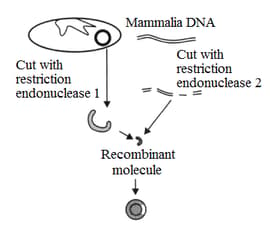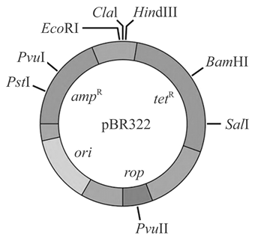Four mutant strains of bacteria all require substance to grow (each strain is blocked at one step in the biosynthesis pathway). Four plates were prepared with minimal medium and a trace of substance to allow a small amount of growth of mutant cells. On plate , mutant cells of strain were spread over entire surface of the agar to form a thin lawn of bacteria. On plate , the lawn was composed of mutant cells of strain and so
on. On each plate, cells of each of the four mutant types were inoculated over the lawn, as indicated in the figure by the circles. Dark circles indicate excellent growth. A strain blocked at a later step in the substance metabolic pathway accumulates intermediates that can 'feed' a strain blocked at an earlier step.

What is the order of genes in the metabolic pathway for synthesis of substance
on. On each plate, cells of each of the four mutant types were inoculated over the lawn, as indicated in the figure by the circles. Dark circles indicate excellent growth. A strain blocked at a later step in the substance metabolic pathway accumulates intermediates that can 'feed' a strain blocked at an earlier step.


Important Questions on Biotechnology - Principles and Processes
Which of the following is the correct sequence of processes in recombinant DNA technology?
I. Transfer of the recombinant DNA into the host.
II. Isolation of DNA with desirable genes.
III. Introduction of identified DNA into the vector.
IV. Downstream processing
V. Culturing the host cells at large scale in bioreactor.
Match the tissues/molecules mentioned in Column I with those of the degrading enzymes mentioned in Column II and select the correct option.
| Column I | Column II |
| A. Cell wall | i) Pectinase |
| B. RNA | ii) Protease |
| C. Histone | iii) Cellulase |
| D. Pectin | iv) Ribonuclease |
The basic procedure involved in the synthesis of recombinant molecule is depicted below.

The mistake in the procedure is:
Look at the diagram of the plasmid vector pBR322 given below and identify 'a' and 'b'.

